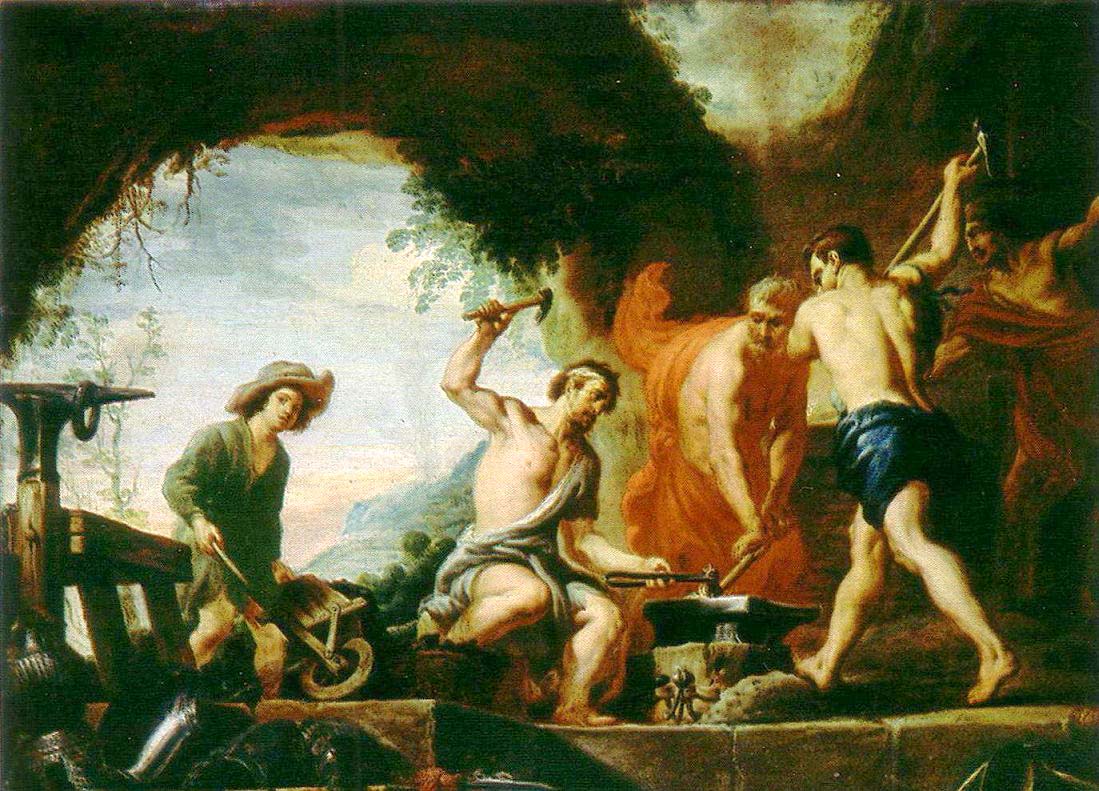Hephaestus or Vulcan
the craftsman fire God and master of metals

He was the god of fire and metal, the owner of volcanoes. A tradition treats him as the son of Hera and Zeus. Another says he was born only from Hera without the union o Zeus. Homer says he was born lame, which displeased his mother and so she cast him from Olympus into the sea. He was rescued by Thetis and Eurynome, who brought him up to the depths of the ocean. There he stayed for nine years.
To avenge his mother, for throwing him into the sea, he gave her a golden throne. This throne was built by him alone and had placed on it invisible ropes. When she sat down, she was tied up and no one could set her free. Then Dionysus made Hephaestus drunk, brought him to Olympus where he eventually untied his mother.
Another tradition, which is more prevalent, mentions differently why Hephaestus was lame. So it says that Zeus threw him out of Mount Olympus, because when he himself quarreled with Hera, Hephaestus took his mother's part. For one whole day the god was falling. Finally at sunset he landed in the island of Lemnos. Its inhabitants received him and took after him. That is why in the ancient times it was believed that his copper workshop was located in Lemnos, in the Mosychlos volcano. They also believed that his assistants were the Cavers, who were worshiped in Lemnos.
Other myths say that his workshop was in Etna of Sicily and that his helpers were the Cyclopes. It’s also said that up there was manufactured the throne of Zeus, the golden chest of Heracles, the scepter of Agamemnon, the necklace of Harmony, the chariot of Helios, the armor of Achilles, etc. Besides, they say that he had built a brass palace for the gods.
His wife was the most beautiful goddess, Aphrodite (also known as Venus). But she was not faithful to him, and once, with the help of an invisible net, he caught her with the god Ares. His children are considered to be Erichthonius, the Argonaut Palaemon, sculptor Ardalos and others.
He was worshiped mainly in Athens, where there was a temple in his honor, the one we call Thiseio. The celebrations that took place at that location were called Hephaestea and Chalkea. Those festivals he shared with the goddess Athena, who was also considered a goddess of the arts.
In art, Hephaestus is portrayed as a bearded and robust man. He usually wears a round or conical cap and keeps his art tools in his hand.